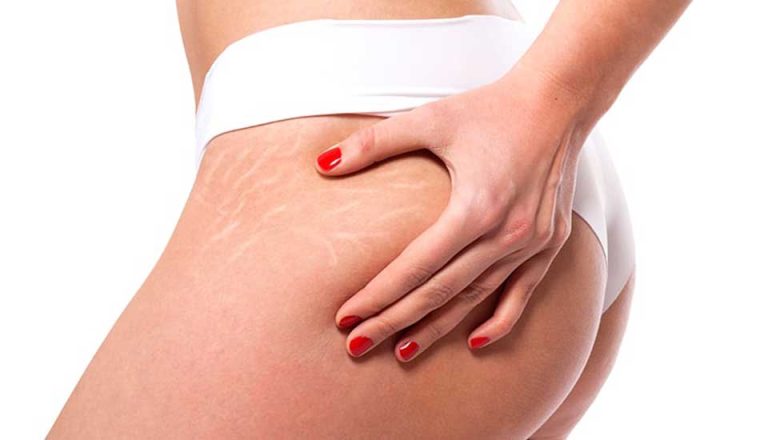The Benefits of a Tummy Tuck: Answers to Common Questions
Posted on: August 15, 2023
A tummy tuck, also known as abdominoplasty, is a surgical procedure that removes excess fat and skin from the abdomen. It can also be used to restore weakened or separated abdominal muscles. During the procedure, an incision is made between the hip bones and around the navel, and excess skin and fat are removed. The remaining skin is then pulled down and sutured together.
Benefits of Tummy Tuck
Tummy tucks can help reduce the appearance of a protruding abdomen, resulting in a flatter stomach. They can also provide relief from back pain caused by weak abdominal muscles. Additionally, they may improve self-confidence since many people feel more comfortable with their bodies after undergoing this surgery.
Risks of Tummy Tuck
As with any type of surgery, there are risks associated with tummy tucks. These include infection, bleeding, scarring, nerve damage, and excessive fluid accumulation. There is also a risk of complications due to anesthesia. Patients should discuss these risks with their surgeon before undergoing the procedure.
Tummy tuck surgery removes excess fat and skin from the abdomen, resulting in a flatter stomach and potential improved self-confidence. Risks include infection, bleeding, scarring, nerve damage, and complications due to anesthesia.
What to Expect During a Consultation
Patient History
When you meet with your doctor for a tummy tuck consultation, they will first take your medical history. You will likely be asked about any health problems or conditions that you have, as well as any medications that you are currently taking. This information is important for the doctor to determine if you are a good candidate for the procedure and to understand the potential risks involved. It is also important to be honest and open with your doctor about any previous surgeries or treatments that may affect the outcome of your tummy tuck.

Physical Examination
Your doctor will also perform a physical examination during the consultation. They will examine the area around your abdomen, looking at both the skin and underlying muscle tissue. They will also measure your abdominal circumference in order to determine how much excess skin needs to be removed during surgery. The doctor may also take photographs of your abdomen before and after surgery in order to document your progress and compare results from one visit to another.
Treatment Options
During the consultation, you and your doctor will discuss different treatment options available for tummy tuck surgery. Your doctor can explain the details of each option, including what type of incision is used, how much skin is removed, and what kind of anesthesia is used during the procedure. This helps ensure that you are aware of all possible outcomes before making a final decision about which procedure is best for you.
Before and After Photos
Your doctor may also show you before-and-after photos of other patients who have had similar procedures done in order to give you an idea of what results you can expect from your own tummy tuck surgery. Seeing these photos can help you visualize what changes may occur after surgery and better understand what results are achievable through this type of plastic surgery.
Tailoring the Procedure
Your surgeon will work with you to tailor the procedure so that it meets your individual goals and needs. During this process, they can discuss any additional procedures that may be necessary in order to achieve optimal results from your tummy tuck surgery such as liposuction or fat transfer techniques. Additionally, they can provide helpful advice on lifestyle modifications such as dieting or exercise regimens that may help improve post-operative outcomes.
Post-Surgery Instructions
Finally, it’s important to discuss post-surgery instructions with your doctor prior to undergoing tummy tuck surgery. These instructions typically include information on when it’s safe to return home after surgery, how often follow-up visits should occur, when it’s safe to resume normal activities such as exercise or sexual intercourse, and how long it takes for full recovery following the procedure. Your surgeon will also provide detailed instructions on how to care for yourself during recovery in order to minimize complications and ensure optimal healing results post-surgery
| Topic | Description |
| Patient History | Health problems and medications discussed to determine candidacy and risks. |
| Physical Examination | Examining the skin and underlying muscle tissue, measuring abdominal circumference, taking photos. |
| Treatment Options | Types of incisions, amount of skin removed, type of anesthesia used. |
| Before and After Photos | Seeing other patient’s results to visualize potential outcomes. |
| Tailoring the Procedure | additional procedures for optimal results, lifestyle modifications for post-operative outcomes. |
| Post-Surgery Instructions | When to return home, follow-up visits, when to resume normal activities, recovery time. |
Recovery Process
The recovery process after a tummy tuck surgery is a crucial part of the procedure and should be taken seriously. It is important to follow your surgeon’s instructions carefully in order to ensure the best possible results.

Walking the Day of Surgery
It is recommended to walk the day of your surgery, as it can help reduce swelling and promote circulation. However, you should avoid strenuous activities and bending over for the first few weeks after your procedure. Your doctor may also recommend wearing compression garments or wraps during this time to reduce swelling and encourage healing.
Bruising and Swelling
Some bruising and swelling are normal following a tummy tuck, but these symptoms should improve over time. To help reduce swelling, you should stay well hydrated and keep your legs elevated when resting. You may also need to apply cold compresses periodically throughout the day to reduce discomfort caused by inflammation.
Resuming Normal Activities
Most patients can resume light activities within two weeks of their surgery, but more strenuous activities such as running or lifting heavy objects should be avoided for at least four weeks after the procedure. Additionally, it is important to take extra care when exercising during this time as too much strain on the abdominal muscles can cause them to separate from the incision site.
Weight Fluctuations and Pregnancy
Weight fluctuations should be avoided after a tummy tuck since they can affect the results of your procedure. Additionally, women who are considering getting pregnant in the future should wait until after their tummy tuck before doing so, as pregnancy can cause stretching of the skin which could negate some of the effects of your surgery.
Recovery process after a tummy tuck is important and involves walking, reducing swelling, avoiding strenuous activities and weight fluctuations. Compression garments or wraps may be recommended to reduce swelling; cold compresses can help reduce discomfort; light activities can resume within two weeks; avoid pregnancy before tummy tuck.
Risks Involved with Tummy Tuck Surgery
Tummy tuck surgery is a major procedure that comes with risks, just like any other form of surgery. It is important for patients to understand the potential risks associated with the surgery before deciding to move forward with it. This section will discuss the various risks involved in tummy tuck surgery so that patients can make an informed decision about whether or not it is right for them.
Bleeding and Infection
The most common risk of tummy tuck surgery is bleeding and infection. During the procedure, large amounts of tissue are moved around, which can lead to excessive bleeding. Additionally, due to the nature of the surgery, there is an increased risk of infection as bacteria may enter the wound site during the procedure. To reduce these risks, surgeons take extra precautions such as using sterile instruments and making sure that the patient’s skin is clean before beginning the procedure.
Compression Boots and Blood Thinners
Another potential risk of tummy tuck surgery is a blood clot forming in either leg due to restricted movement during recovery. To prevent this from happening, patients are encouraged to wear compression boots throughout their recovery period and take blood thinning medication if necessary. The boots help keep circulation flowing in the legs, while the medication helps reduce the risk of clots forming in veins or arteries.
Overall, tummy tuck surgery carries some risks that must be weighed against its potential benefits before deciding whether or not to proceed with it. By understanding these risks ahead of time, patients can make an informed decision about whether or not they want to go through with it.
| Risks of Tummy Tuck Surgery |
| Bleeding and Infection |
Conclusion
Tummy tuck surgery can be a great option for those looking to improve the appearance of their abdomen and reduce excess skin. It is important to understand the risks involved with any type of surgery, including tummy tuck surgery. It is also important to discuss all options with a qualified surgeon prior to making a decision about whether or not it is right for you. The recovery process can be long and uncomfortable, but the results can be life-changing. With proper care and a healthy lifestyle, patients can enjoy the benefits of this procedure for many years to come.





